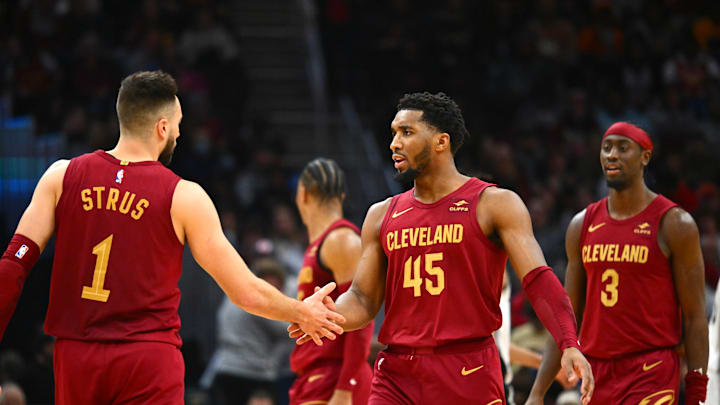When Evan Mobley and Darius Garland went down to injury in December, many Cavaliers fans felt the season was over.
Missing two starters could sink any team, and the outlook for Cleveland was quite negative because Evan and DG are not to be back until late January at the earliest for either player. Still, the Cavaliers persisted. The Wine & Gold has progressed in many ways since the injuries, giving hope to the fanbase for their return.
Four underlying statistics point to how the Cavaliers have improved month-on-month. Rebounding improved defensive rating, second-chance points and three-point shooting has kept the Cavs afloat with their missing stars and into homecourt advantage at the fourth seed in the Eastern Conference.
Improved team rebounding is at the core of Cleveland's win streak
With Evan Mobley getting hurt and having knee surgery, conventional wisdom suggests that the Cavaliers' defense and rebounding would suffer. This has not been the case. In November, the Cavaliers ranked 19th in offensive rebounding percentage (27.7) and 21st in overall rebounding percentage (49.7). For December, there was a marked improvement to ranking sixth in offensive rebounding percentage (32.2) and eighth overall (51.3).
In the small sample size of January (five games), Cleveland ranks third in offensive rebounding percentage (33.2) and second overall (55.2). One quick observation that could be the catalyst for this statistical progress is the increased minutes and effective play of Cleveland veteran Tristan Thompson. Also, the stellar play of Jarrett Allen has been another big reason for the rebounding improvement as JA has had nine double-doubles in the last nine games, a career-high streak.
Although not known for rebounding, Donovan Mitchell has added that element to his game since joining Cleveland. For Spida’s first five seasons in Utah, he had a total of seven double-doubles either assisting or rebounding. Donovan already has nine double-doubles in one-and-a-half years with the Cavaliers. Additionally, Mitchell has four double-doubles this season, with three out of the four being rebounding double-doubles.
This kind of production has been great for Mitchell and makes the Cavs a better rebounding and defensive team. Their rebounding extends beyond just the defensive end, though, elevating Cleveland's offense, as well.
Second-chance points have boosted the Cavaliers' offense
There is a basketball proverb that goes "Boardman gets paid" by the two-time NBA Finals MVP Kawhi Leonard. Controlling the boards defensively and offensively can lead to easy fast break points and 2nd chance points.
The Cavaliers averaged 14 second-chance points (ranked 20th) in November, 17.9 second-chance points (first) in December and 20.3 second-chance points thus far in January (first). On the other side of the ball, the Cavaliers have limited the opponent with second-chance points with their boosted rebounding. In November they allowed 16.5 second-chance points (ranked 26th), 11.8 second-chance points in December (second), and 11 second-chance points in January (third).
The Cavaliers' rebounding has also elevated their offense, getting out on the break and scoring easy transition buckets. In November they averaged 15.5 fast break points (ranked seventh), 11.9 fast break points in December (26th), and 17.4 fast break points in January (sixth). All in all, good rebounding keeps the other team from scoring and can lead to easy buckets on the other end. A simple recipe for success.
